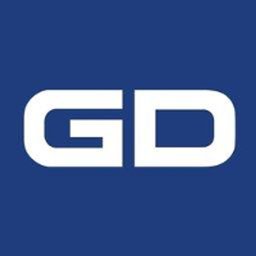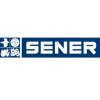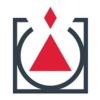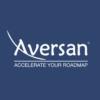Systems Safety Specialist/engineer
London, ON, CA, Canada
Job Description
Description
Systems Safety Specialist/Engineer P54
The Safety Specialist role is responsible for performing System Safety, Health Hazard and Hazardous Materials analyses during system/subsystem design for the purpose of ensuring vehicle crew safety, as well as quantifying and reducing the system's impact to the environment. The Safety Specialist is involved throughout the design process including requirements development, concept development, and final design development, presenting the results of these analyses and recommendations for improvements at internal and external design reviews. Additionally, the Safety Specialist is responsible for preparing and providing a variety of reports/Contract Data Requirements List (CDRLs) as required to support contract and testing requirements.
Key Job Elements
Collaborate with design teams to conduct hazard and risk assessments related to System Safety, Software Safety, Occupational Health, Hazardous Materials and Environmentally damaging material during vehicle design and work to mitigate Use various safety analysis techniques to perform preliminary hazard assessments, such as Failure Modes and Effects Analysis (FMEA), Fault Tree Analysis (FTA), and Functional Hazard Assessments (FHA) Evaluate designs to compliance with relevant safety standards and regulations (e.g., ISO 26262, MIL-STD-882). Work closely with cross-functional teams, including design, systems and project engineering to proactively address safety concerns. Evaluate customer requirements for Environmental, Safety and Occupational Health (ESOH) and determine vehicle compliance Create and manage Hazard Logs, Risk Registers, and conduct Hazard Tracking Support System Engineering Department in development of the System Specification Document ensuring safety, occupational health and hazardous materials requirements are captured Support defining software safety requirements, complete software safety analyses and support software safety testing conducted by the Software Team Support, as required, ESOH testing (Noise Testing, Air Quality Testing) to determine compliance to contract and/or system specification requirements Support, as required, Safety, Occupational Health, Hazardous Materials and Environmental Impact reports to be submitted to the Customer
Required Qualifications
University Degree or College Diploma in a related field, such as in an ESOH discipline or equivalent (engineering, environmental, industrial hygiene, etc) Minimum 3 years relevant experience Experienced in conducting MIL-STD-882 safety analyses Knowledge of Safety Engineering Principles, Design Standards and able to assess if concept designs are likely to achieve numerical safety targets Advanced knowledge of international and local safety, occupational health and environmental standards (legislative and design) Demonstrated ability to work within a team environment with minimal supervision Strong communication, organization and prioritization skills Intermediate computer skills in MS Office, including Word, Excel and PowerPoint Must be able to meet Anthropometrical Size Requirements for confined space Ability to travel (5% Cdn) and (5% US & International) and possess/be able to acquire and maintain a valid passport
Preferred Qualifications
P. Eng or the ability to obtain a P. Eng Experience in System Safety in product design Experience in applying safety related Military Standards (i.e.: MIL-STD-882, MIL-HDBK-764) to product design Professional certification in safety (i.e.: CRSP, CHSC, CSP, ROHT, CIH or equivalent) Able to construct and update Fault Tree Analysis (FTA) and Event Tree Analyses (ETA) An understanding of Functional Safety and ISO 26262 Familiarity with Dynamic Object-Oriented Requirements System (DOORS)
Working Conditions:
Physical Conditions and Hazards:
The conditions in which an individual or staff works, including but not limited to such things as amenities, physical environment, stress and noise levels, degree of safety or danger, temperature, location.
1) Physical Environment: Office
2) Hazards: NA
Physical Demands Description:
This section objectively captures and describes the physical demands that are required to perform a particular job or role. Usually completed by the ergonomist
Usual mobility demands required are standing, walking, sitting, and stair climbing to access upper offices.
Equipment Utilized:
This section describes the type of equipment an employee is required to use:
Computer
Phone
Mobile device
Medical Surveillance
May include: Anthropometrical Size Restrictions depending on task
Personal Protective Equipment:
Applicable when interacting with shop floor (safety shoes, safety glasses, hearing protection. extraction coveralls)
August 22, 2025
Beware of fraud agents! do not pay money to get a job
MNCJobz.com will not be responsible for any payment made to a third-party. All Terms of Use are applicable.
Job Detail
-
Job IdJD2653104
-
IndustryNot mentioned
-
Total Positions1
-
Job Type:Full Time
-
Salary:Not mentioned
-
Employment StatusPermanent
-
Job LocationLondon, ON, CA, Canada
-
EducationNot mentioned



